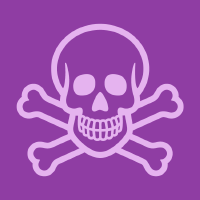Topic Editors



Innovative Strategies to Mitigate the Impact of Mining
Topic Information
Dear Colleagues,
The importance of mining to the global economy cannot be underestimated. It provides a diverse range of mineral commodities that are essential to our everyday lives as vital raw materials for numerous products that we use. In addition, many industries depend on input from the mining industry, such as in the manufacturing of drugs, glass, plastics, ceramics, electronics, etc.
However, the evolution of the mining has been coupled with a huge environmental footprint, i.e., acid mine drainage, deforestation, noise, dust, air and water pollution, public health impacts, and a loss of livelihoods. How to mitigate the impacts of mining and, simultaneously, offset the increased environmental and social costs, has been one of the most daunting problems encountered by the mining industry.
Over the last decade, innovative strategies have been proposed to mitigate the impact of mining in different areas. Some studies propose the identification of mining-induced soil pollution using advanced remote sensing, while others intend to design novel ways to recycle solid waste. On this basis, the overall aim of this Topic is to collect state-of-the-art research findings on the latest developments, challenges, and solutions in the field of mitigating the impacts of mining. The key areas that have been concentrated on include, but are not limited to:
- Innovative strategies to mitigate the impact of mining on water resources, i.e., acid mine drainage, contaminant leaching, soil and mine waste erosion into surface waters, and groundwater drawdown.
- Innovative strategies to mitigate the impact of mining on air quality, i.e., air pollution, the incidental release of mercury during gold mining, noise pollution, and mining-induced vibrations.
- Innovative strategies to mitigate the impact of mining on soil quality, i.e., heavy metal pollution, remediation, food safety, and wildlife.
- Innovative strategies to mitigate the impact of mining on the community, i.e., human displacement and resettlement, human migration, lost access to clean water, impacts on livelihoods, public health, and cultural/aesthetic resources.
- Innovative strategies to mitigate the impact of mining on global climate change, primarily greenhouse gas emissions.
- Life cycle assessments and case studies for green mining.
Prof. Dr. Chongchong Qi
Dr. Qiusong Chen
Dr. Danial Jahed Armaghani
Topic Editors
Keywords
- environmental impacts
- sustainability
- pollution identification
- pollution remediation
- solid waste minimization
- recycling
- circular economy
Participating Journals
| Journal Name | Impact Factor | CiteScore | Launched Year | First Decision (median) | APC | |
|---|---|---|---|---|---|---|

Applied Sciences
|
2.7 | 4.5 | 2011 | 16.9 Days | CHF 2400 | Submit |

Crystals
|
2.7 | 3.6 | 2011 | 10.6 Days | CHF 2600 | Submit |

Materials
|
3.4 | 5.2 | 2008 | 13.9 Days | CHF 2600 | Submit |

Minerals
|
2.5 | 3.9 | 2011 | 18.7 Days | CHF 2400 | Submit |

Mining
|
- | - | 2021 | 15 Days | CHF 1000 | Submit |

Toxics
|
4.6 | 3.4 | 2013 | 14.7 Days | CHF 2600 | Submit |

MDPI Topics is cooperating with Preprints.org and has built a direct connection between MDPI journals and Preprints.org. Authors are encouraged to enjoy the benefits by posting a preprint at Preprints.org prior to publication:
- Immediately share your ideas ahead of publication and establish your research priority;
- Protect your idea from being stolen with this time-stamped preprint article;
- Enhance the exposure and impact of your research;
- Receive feedback from your peers in advance;
- Have it indexed in Web of Science (Preprint Citation Index), Google Scholar, Crossref, SHARE, PrePubMed, Scilit and Europe PMC.

